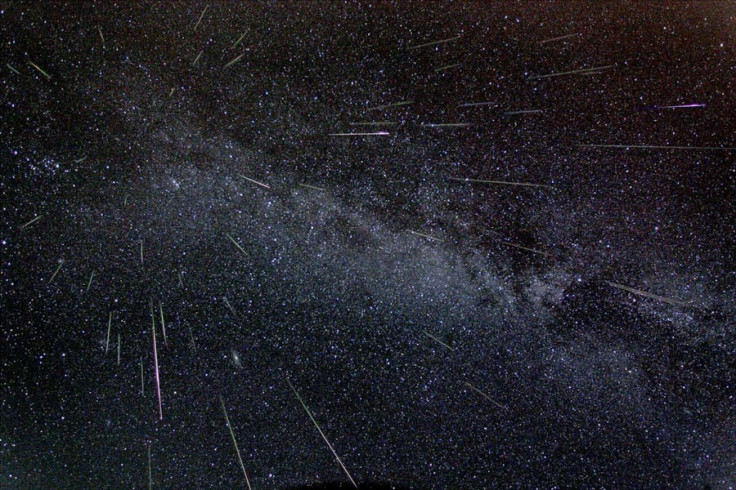Perseid Meteor Shower 2011: When and Where You Can Watch

The Perseid Meteor Shower is set to dazzle the night sky this weekend.
The Perseid meteor shower comes to us around this time every year and forms when the Earth goes through a cloud of interplanetary dust left behind by a comet named Swift-Tuttle. As these specks are ejected throughout our atmosphere, a meteor shower occurs
It is named Perseid because the meteor shower points where they come from, which is the constellation Perseus. It has been observed for at least 2,000 years. The word comes from the Greek mythology term Perseides, which means sons of Perseus. Because of its meteors originating from its filament, Perseids is considered one of the best meteor showers of the year by many according to NASA.
The space agency says because of the moon, the rate of meteors will be 20-30 per hour at most. For best viewing, NASA recommends sky watchers check out the darkest parts of the sky. Do not look at the moon or anything bright in the sky. If the weather is cloudy or you live in a large metropolis like New York City - you're probably out of luck. Sorry.
Also, NASA says those who live in the Southern Hemisphere are probably not going to see much either. The Perseid radiant doesn't climb above the horizon.
When: The meteor shower is expected to start late Friday, Aug. 12 and into the early morning of Saturday, Aug 13. NASA is hosting a live chat at 11 p.m. EDT on Friday that will run to 5:00 a.m. EDT on Saturday. Typically, meteor showers start after midnight. The peak hour is usually 3-4 a.m. EDT.
In addition to your own backyard, NASA is offering several live feeds of cameras that will catch the meteor shower. There will be the official NASA feed, mounted at NASA's Marshall Space Flight Center in Huntsville, Ala. That feed will be available at NASA.com on NASA TV.
There are several other options for a live video feed as well which are listed below.
Sandia Sentinel Fireball Camera Network, El Paso, Texas (NMSU All Sky Camera Network)
Sandia Sentinel Fireball Camera Network, Hawley, Texas
Oak Grove Observatory, Prairieville, La.
New Mexico Skies Observatories, Mayhill, N.M.
MMTO Sky Camera, Tuscon, Ariz.
Twin Pines Observatory, Belmont, Calif.
Lick Observatory All-Sky Camera, Mount Hamilton, Calif.
Meadow View Observatory, Chico, Calif.
Shane Observatory AllSky Camera, Prince George BC, Canada
RASC Prince George Centre AllSky Camera, Prince George BC, Canada
Paul Beskeen Astrophotography, Cambridgeshire, U.K.
Follow Gabriel Perna on Twitter at @GabrielSPerna
© Copyright IBTimes 2025. All rights reserved.





















